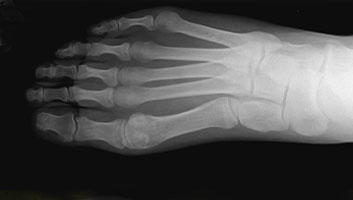
Have you ever felt a nagging pain that just won’t go away? While resting it’s no problem, but the moment you run, or play your chosen sport, it returns.
The pain feels deep and within the bone, when you push on that sore bit of bone it feels very tender. If you have experienced any of these symptoms, there’s a good chance you may have a stress fracture. Usually when running, a stress fracture in the leg or foot will cause severe pain at the beginning of the run, moderate pain in the middle of the run, and severe pain at the end of the run. If neglected or left untreated, the pain will begin earlier during the exercise, and continue even after the exercise is finished.
Our bones are slowly constantly changing shape, they are doing this in response to the loads that we place on them. This is made possible by cells in our bodies that take away bone (osteoclasts), and others that lay down new bone (osteoblasts). When a lot of stress is placed on a leg bone- when running for example- microscopic damage occurs. The damaged bone is then taken away by the osteoclasts, and the injured site is weakened. If a long period of time is allowed to elapse before the next stress episode, the osteoblasts will lay down new bone and repair the injured site. If there is not enough time for the osteoblasts to produce more bone at the injured area, the micro fractures can join together to form a large enough area to cause a stress fracture.
Stress fractures are caused by repetitive stress placed on a bone over a period of time, where the bone is unable to repair itself. For example; a middle distance runner training daily. A single running step will not cause a bone to break, but when thousands are added together, the bone’s ability to repair itself may become overwhelmed. Stress fractures are considered to be an overuse injury.
While stress fractures in the foot and leg bones are common in runners, other sports have associated stress fractures in other areas. Trap-shooters can get them in the shoulder, baseball pitchers- the elbow, rowers and kayakers- the ribs, cricket fast bowlers and gymnasts- the back.
If you are unlucky enough to suspect that you have a stress fracture, a trip to the physiotherapist or doctor is in order. A bone scan is usually the investigation of choice used to confirm the diagnosis. Treatment of stress fractures generally involves a period of rest and the avoidance of the activity that caused the injury. Most stress fractures will heal within 6 weeks of commencing rest, however, it is common that stress fractures in the foot will need more time. Once the resting period is over, the bones should be progressively loaded over an extended period of time, rather than immediately returning to previous exercise loads.
Good luck! Enjoy the season, and try to stay stress free!
